The Wild Life of India by E. P. Gee
I have been looking for a copy of this famous book “The Wild Life of India” by E. P. Gee for a long time and finally found a collectors version in US. This was first published in the USA by E. P. Dutton & Company, INC in 1964. This book was printed in Great Britain.
Foreword by Jawaharlal Nehru
Not many books can claim to have the foreword written by the first Prime Minister of India. However, E. P. Gee’s book with Foreword written by the then sitting Prime Minister of India, Shri Jawaharlal Nehru speaks volumes about the book as well as the author’s importance in those times. The foreword was signed on 20th Feb 1964 and hardly three months later there was the sad demise of Shri Jawaharlal Nehru on 27th May 1964. Nevertheless, the foreword is extremely thought provoking and contains thoughts that is relevant even today.
Nehru starts the foreword by writing “Wild life ? That is how we refer to the magnificent animals of our jungles and to the beautiful birds that brighten our lives. I wonder sometimes what these animals and birds think of man and how they would describe him if they had the capacity to do so. I rather doubt if their description would be very complementary to man. In spite of our culture and civilisation, in many ways man continues to be not only wild but more dangerous than any of the so-called wild animals”.
He also says “…life would become very dull and colourless if we did nto have these magnificent animals and birds to look at and to play with. We should therefore, encourage as many sanctuaries as possible for the preservation of what yet remains of our wild life. Our forests are essential for us from many points of view. Let us preserve them. As it is, we have destroyed them far too much. It is true that as population grows, the need for greater food production becomes necessary. But this should be by more intensive cultivation and not by the destruction of the forests which play a vital part in the nation’s economy”.
The book “The Wild life of India” has twenty chapters which not only talks about his experiences in various wild life sanctuaries in India but also details the state of flora and fauna during those times, the prevailing thought about wild life and its preservation.
The author was a wild life photographer of repute with his black and white photographs as well as coloured photos showing not only his composition but also the sharpness of his images. Photographers of the digital age, addicted to indiscriminately pressing the shutter button of their cameras like profligate hunters of yore indiscriminately pressing their trigger buttons, can learn a thing or two by simply watching E. P. Gee’s photographs contained in this book.
Hair-raising encounters
“The Wild Life of India” also contains some hair-raising encounters. In the first chapter E. P. Gee mentions an interesting conversation with Colonel R. W. Burton. “Formerly well known as a big game hunter, he was then over eighty, a small, frail but erect and commanding person, who had spent most of his retirement in India, championing the cause of India’s ever-dwindling wild life.During his adventurous career one leg had become shortened and one eye had the lower lid hanging down with a scar just below it. As soon as we began talking I asked him about the misadventure which had left this mark.
He grinned. “I once followed up a wounded bear, crawling on my knees into its cave. It seized my head in its jaws”. He seemed to be reflecting on the recklessness of youth, and of things that had happened long ago.“Did you have your rifle with you?” I asked.“Yes, my rifle was pointing at the bear’s chest. Had I pulled the trigger the bear’s jaws would have clamped hard shut and finished me off”. A pause.“Then what happened?” I asked.“I still did not fire. I yelled loudly, and the bear let go. I then retreated quickly to safety,” he thus concluded, and the conversation turned to wild life preservation.”
From this example one can understand that this book is written in a first person account detailing many of his conversations, travels, experiences and hence will capture the imagination of not only the wild life enthusiast but also layman, young and old alike.
He describes one of his own near brush with death in the chapter “The Rhino of Kaziranga” when he was returning on foot from photographing in a machan. He writes “We had not gone more than a hundred yards when there was a noise nearby, and with a panicky “Rhino coming!” both my men, who were aged about twenty, disappeared down the track, seemingly breaking all Olympic records. At their age, I could have run even faster. But I knew that a rhino can soon catch up with the fastest of humans. However, I also started to try and escape. The track was wet and slippery and much depressed in places by three-toed rhino and large circular elephant footprints.
After about ten yards, I did the best possible thing I could have done. I slipped and fell down, flat on my face, with the rhino very close at hand. I knew that an Indian rhino, unlike a wild elephant, will not continue its attack on a fallen victim, and I quickly rolled sideways off the track into the grass and remained perfectly still.
The rhino thundered past. After about twenty minutes the grass parted and one of the men, who had come back by a long detour, asked if I was all right. We then together went along the track, on to the main road and called to the other man. After a long time he emerged, too frightened to talk. Then, at last, he described how he had eventually thrown himself into a thick clump of grass, and how the rhino had stood over him breathing heavily before going on its way”. (page 162-163)
Rhino Sounds:
E. P. Gee has also described his observations on the sounds produced by the rhinos. “Several writers on animals have described the Indian Rhino as only uttering one noise, a grunt! I have heard four different noises: a roar or a bellow when newly captured, a snort when excited or disturbed, a grunt when not disturbed and a peculiar whistling sound at the time of courting and mating. I think it is the female which makes this whistling sound, while the male grunts; but I notice that several sportsman-writers of the old days have described a whistling noise made by a mortally wounded rhino”. (page 158)
E. P. Gee also has some acute observations about the cattle lifters: “the arm-chair reader living in a city may perhaps be invited to reflect that a tiger has a right to live and that to do so it must kill some live animal about twice a week; that wild herbivores animals in the forests have become scarce, so a tiger will come out and kill domestic stock anyway; that the tiger is a very selective creature, and will kill the healthier and younger animals and overlook the useless and aged if it has the chance to do so; that there is an alarming surplus of every kind of domestic stock in India, from buffaloes down to goats, which are consuming all the vegetation and doing their level best to turn the country into a desert as many parts of North Africa and the Middle East have become….” (Page 64)
On Jim Corbett:
“It was Jim Corbett and a society of the U.P. (then the United Provinces) who originated the effort to preserve India’s wild life in the early thirties. I corresponded with him and contributed to Indian Wild Life, a magazine which was published then.
Unfortuanately this movement and the magazine did not flourish, and by the time the second world war came both had suffered the very same fate from which they were trying to preserve the rarer animals – extinction.
…. A cutting of my article (on Hailey Park) also chanced to be sent to Jim Corbett in Kenya, and a letter came from him in February 1955”.
Jim Corbett wrote “There was great opposition (from sporting interests) to the formation of the park and as soon as Hailey left, the District Officials combined and reduced the area of the park from 180 to 125 square miles…Now that the Uttar Pradesh Government is taking an interest in wild life I am hoping it will be possible to restore the fifty-five square miles to the Park”.
In 1957 Hailey Park was later renamed Corbett National Park and a dam was constructed on the Ramganga river just below the Park boundary inundating large part of the Park.
Leopard in Andamans:
“The position of the chital and the leopards in the Andamans is being carefully watched, so that a balance can be maintained. When I met the Chief Conservator of Forests of those islands, he told me that a third female leopard might have to be introduced, as the chital were still increasing. In February 1960 six pairs of spotbill ducks and eight pairs of peafowl were also introduced there”.
Discovery of the Golden Langur
E. P. Gee has been credited with the discovery of the Golden Langur and the species named after him as Presbytis geei. While giving details leading to the discovery, E. P. Gee mentions that before him two sportsmen had observed and written about it in the visitors logbook of the rest house near Jamduar. In 1953 E. P. Gee went to Jamduar and photographed as well as filmed the Golden langurs in the Sankosh river. He reported the existence of these langurs to Zoological Society of London and also showed the cine film in the IBWL (Indian Board of Wild Life) and at his request a Survey Party of the Zoological Survey of India was sent to investigate and collect some specimens. “The survey Party, headed by H. Khajuria, duly collected specimens…In his official description of this langur as a new species, Khajuria very kindly named it Presbytis geei, which I gratefully (but very humbly) acknowledge!”
Humorous incidents:
E. P. Gee has also mentioned some humorous incidents in the book. In the chapter The Buffalo of Manas he writes “near the Manas Wild Life Sanctuary is a Rest House in which a wild bear once stayed. Shortly afterwards a Forest Officer stopped there while on tour, and found the place none too clean. Being of an imaginative turn of mind, he wrote in the remarks column of the Rest House register, “as the bungalow had previously been occupied by Brother Bruin, I had a lot of cleaning up to do”.
At the end of the financial year the accounts of the forest Division and relevant supporting books found the Audit Department less imaginative. “it appears,” wrote an official of that Department, “that the previous occupant did not enter name, designation and duration of stay in the book, and that he paid no rent. The rent should be realised from this occupant”. E. P. Gee then proceeds to mention another funny incident regarding the Audit department. His humorous side could also be seen in the chapter Wild Asses on the Rann. “On the last day I set up my photographic hide in some tall grass at a place where a heard of wild asses were expected to come to drink, a small freshwater pond. I was hoping to get a chance of observing them at close quarters. But the herd was much too clever. Once again a very strong conviction obsessed me that I, crouching uncomfortably in the hide in the heat of the day, was the “ass”. The other asses stood on the nearby skyline, lookout sentinels on the alert, cool and collected. Again only a run in the jeep on to the Rann, alongside galloping asses, could restore my self-respect. I think the asses quite enjoyed the gallop.”
“The Wild Life of India” is a must read for not only natural history students, but also for naturalists, scholars, wild life photographers and common man. One can find copies of this book online in amazon.com. I am happy to have finally added it to my collection. I am sure many of you would also have similar feelings.
- GoPro Hero 12 Black - 6 September,2023
- Leopards: The Last Stand - 2 July,2023
- Drifting in the Waters of Sundarbans - 26 March,2023

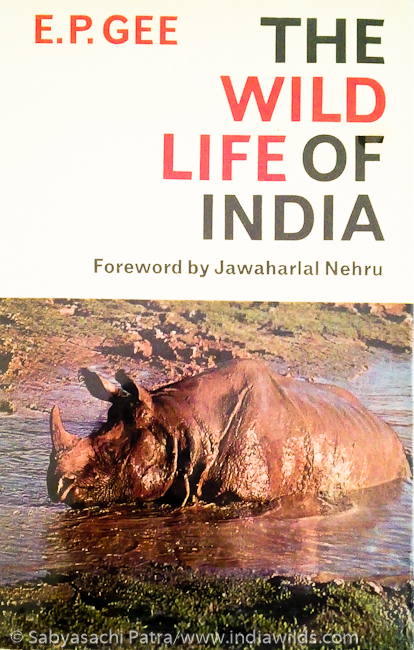

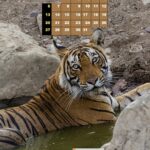
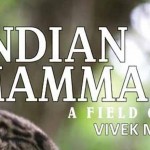
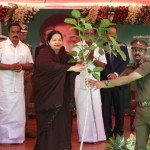
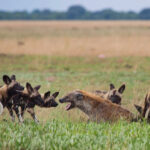
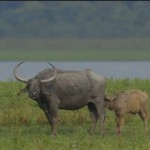
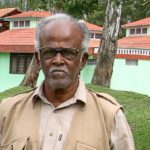



Wow… what a coincidence that I come to your blog and read about a book about wildlife.com..as I came back recently from satpura tiger reserve and have been writing about incredible experiences there!!
Great to hear that you had visited Satpura. Will check your blog soon.
Cheers,
Sabyasachi